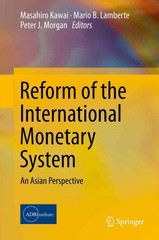Explain the following terms: a. Outward-oriented development strategy An outward oriented strategy can be defined as a strategy based on openness and increased international trade. Outward oriented strategies are used when a developing country aims and export markets which involve focusing on industrialization and opening the economy by moving towards a somewhat more free trade and free capital flows from abroad. Developing countries reduce trade barriers, remove subsidies to domestic firms, and encourage high levels of foreign direct investment (FDI). Countries such as Singapore and Taiwan, they use outward oriented strategy because of the size of country and small populations which means the domestic market in these countries are small. But these countries have a comparative advantage in exporting goods and services, this could cause that labour-intensive products would most likely be exported at a low price, because of the low costs of production of labour-intensive goods. As more goods are exported, the value of the currency will also appreciate. Since exports have risen, and exports are a component of aggregate demand, then aggregate demand should increase. This is short-run growth. Also investments will increase because of the inflow of FDI, which means there is an increase in capital-stock. This is one of the determinants of economic growth. Basically, the advantages of Outward-oriented development strategy include these five points. First, Focusing initially on the production and export of simple, manufactured non-durable goods changed the structure of these economies. Employment opportunities increased for the rural migrants, as these industries were mostly labour intensive. Second, the export revenues earned alleviated problems with the balance of payments as they were used to finance the importantion of necessary intermediate and capital goods. There was less danger of the economy running into foreign exchange and foreign debt problems. Rising export revenues also increased aggregate demand (AD), so they can fuel growth in output and incomes. Third, focusing on the larger export markets forced firms to grow in size and acquire economies of scale (EOS). This is especially important for small countries. Fourth, Firms were forced to learn more about manufacturing their products more efficiently. International competition provided the stimulus. The state also invited technical assistance from abroad but it usually limited contracts so that they lasted no more than three years, forcing domestic firms to learn the necessary technology. Operating successfully in world markets enable firms to acquire the market, financial, managerial and, most importantly, entrepreneurial skills. Exposure to world competition allowed a local entrepreneurial class to evolve and mature. Fifth, through varying degrees of state guidance these economies slowly shifted their comparative advantage and production to more sophisticated and complex manufactured products and later to knowledge-based and technology-intensive products. Their economies therefore diversified and were more insulated firm industry-specific risks







